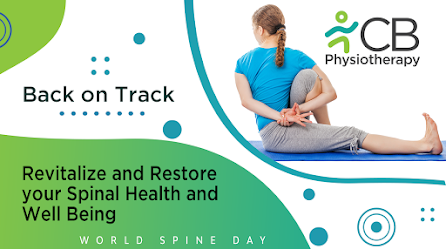Cervical myelopathy is a condition that affects the spinal cord in the neck region, leading to a wide range of symptoms that can significantly impact one's quality of life. While surgery is often considered the primary treatment option, physiotherapy plays a vital role in managing and improving the condition. In this blog, we will explore cervical myelopathy and how physiotherapy techniques address the neck, upper back, joints, and muscles for treatment and rehabilitation.
Understanding Cervical Myelopathy
Cervical myelopathy is a progressive condition caused by the compression of the spinal cord in the neck (cervical) region. This compression can result from various factors, but the most common cause is the degeneration of the cervical spine due to age-related changes. Other causes include spinal stenosis, herniated discs, trauma, tumors, and inflammatory conditions.The spinal cord is a crucial part of the central nervous system, responsible for transmitting messages between the brain and the rest of the body. When it becomes compressed, the communication between the brain and the body is disrupted, leading to a range of neurological symptoms.
Cervical myelopathy is characterized by a broad spectrum of symptoms, which can vary in severity and duration. The most common symptoms include neck pain which is often the first sign of cervical myelopathy, but it can be attributed to various other conditions. In cervical myelopathy, the pain is usually chronic and may radiate into the shoulders and arms. As the condition progresses, muscle weakness can develop, affecting the arms and legs. This weakness can make simple tasks like gripping objects or walking difficult. Many patients experience numbness, tingling, or "pins and needles" sensations in their arms and hands. This is due to the interruption of nerve signals. Cervical myelopathy can affect a person's balance and coordination, leading to stumbling and difficulty walking. In severe cases, the condition can impact bowel and bladder control, which can be particularly distressing and debilitating.
Role of Physiotherapy
While surgery is often recommended for cervical myelopathy, physiotherapy plays a critical role in managing and improving the condition. Physiotherapists are skilled in assessing patients and developing tailored treatment plans to address their specific needs. Here are the ways in which physiotherapy can benefit individuals with cervical myelopathy:1: Pain Management: Physiotherapists can employ various techniques to manage pain, including manual therapy, gentle exercises, and modalities like heat or cold therapy, TENS, etc. By reducing pain, patients can participate more actively in their rehabilitation.
2: Improving Mobility: Cervical myelopathy can significantly impact a person's ability to move and perform daily activities. Physiotherapy aims to enhance mobility and restore functional independence through exercises and stretching routines.
3: Strengthening Weak Muscles: Muscle weakness is a common symptom of cervical myelopathy. Physiotherapists design exercises to strengthen specific muscle groups, helping patients regain strength and stability in their arms, legs, and core.
4: Improving Balance and Coordination: Physiotherapy focuses on balance and coordination training to reduce the risk of falls and improve overall motor function.
5: Sensory Re-education: In cases where patients experience numbness or tingling, physiotherapists may employ sensory re-education techniques to improve sensory perception and spatial awareness.
6: Postural Correction: Poor posture can exacerbate symptoms in cervical myelopathy. Physiotherapists educate patients on proper posture and may use manual techniques to address postural issues.
7: Functional Rehabilitation: Physiotherapists work with patients to improve their ability to perform daily tasks, such as dressing, cooking, and hygiene, to enhance their quality of life.
8: Preoperative and Postoperative Care: For those who undergo surgery, physiotherapy is crucial both before and after the procedure. Preoperative physiotherapy can optimize a patient's physical condition, while postoperative care helps with recovery and rehabilitation.
Cervical myelopathy is a complex condition that can severely affect an individual's daily life. While surgery is often a necessary intervention, physiotherapy plays a crucial role in the management and rehabilitation of cervical myelopathy. Physiotherapists are skilled professionals who tailor treatment plans to each patient's unique needs, helping to reduce pain, improve mobility, and enhance overall quality of life. By working in conjunction with medical and surgical interventions, physiotherapy offers a path to recovery and a brighter future for those living with cervical myelopathy. If you or someone you know is experiencing symptoms of cervical myelopathy, consult a healthcare professional to explore the best treatment options, which may include physiotherapy, and start the journey towards a better, more mobile life.





